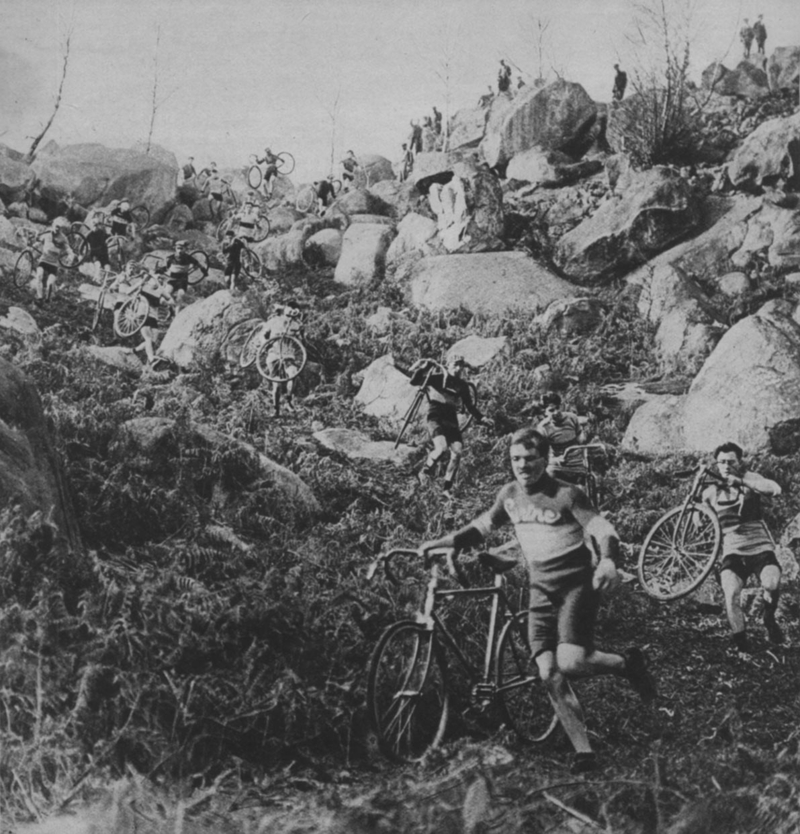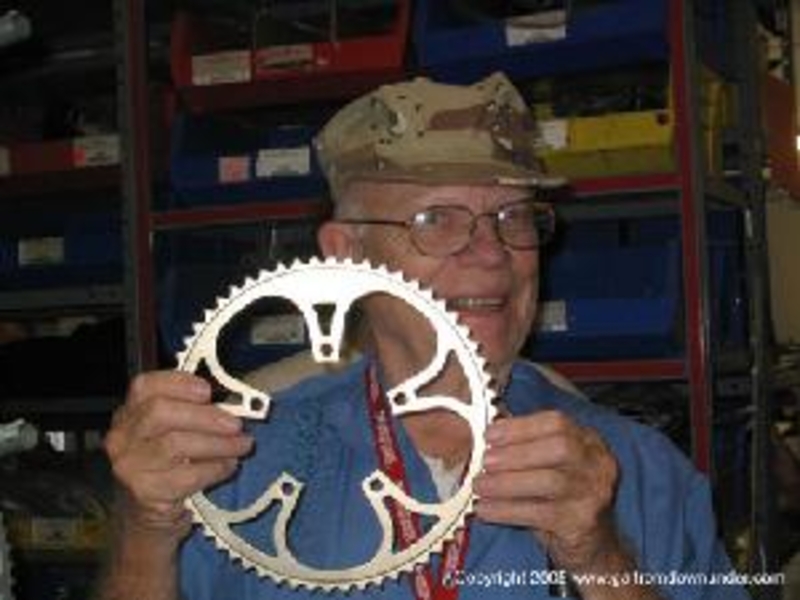Table of Contents
Pre-History
Long before the Repack DH Race there were many pre-MTB bikes that would visually fit right into the timeline. Most of these capable off-roaders didn't evolve into the go-anywhere (especially downhill) focus of the Marin mountain bikes. The final Marin efforts to re-invent the bike worked because they had:
- A decade of people Klunking on single speed cruisers through the Mt. Tam woods.
- Local frame builders and tinkerers who fabricated components.
- Access to quality rims, tires and touring/motorcycle components.
- An attitude of riding for fun and being unconventional.
Other bicycles came close to critical mass of MTB genesis and deserve to be mentioned.
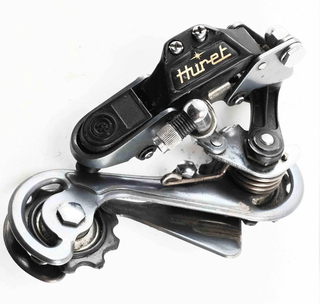
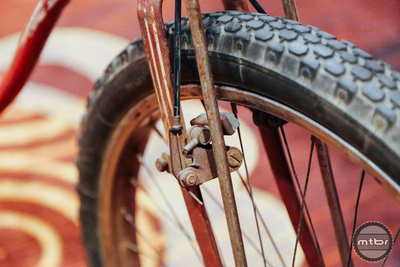
Secret ingredients for a decent off-roader: derailleur, knobby tires & cantilever brakes.
1976 Huret Duopar Titanium rear derailleur: der-ritzler
Tires & brakes:
Otis Guy's Repack racer: Uniroyal Nobby tires, fork truss, Schwinn cantilevers
with motorcycle cables. mtbr
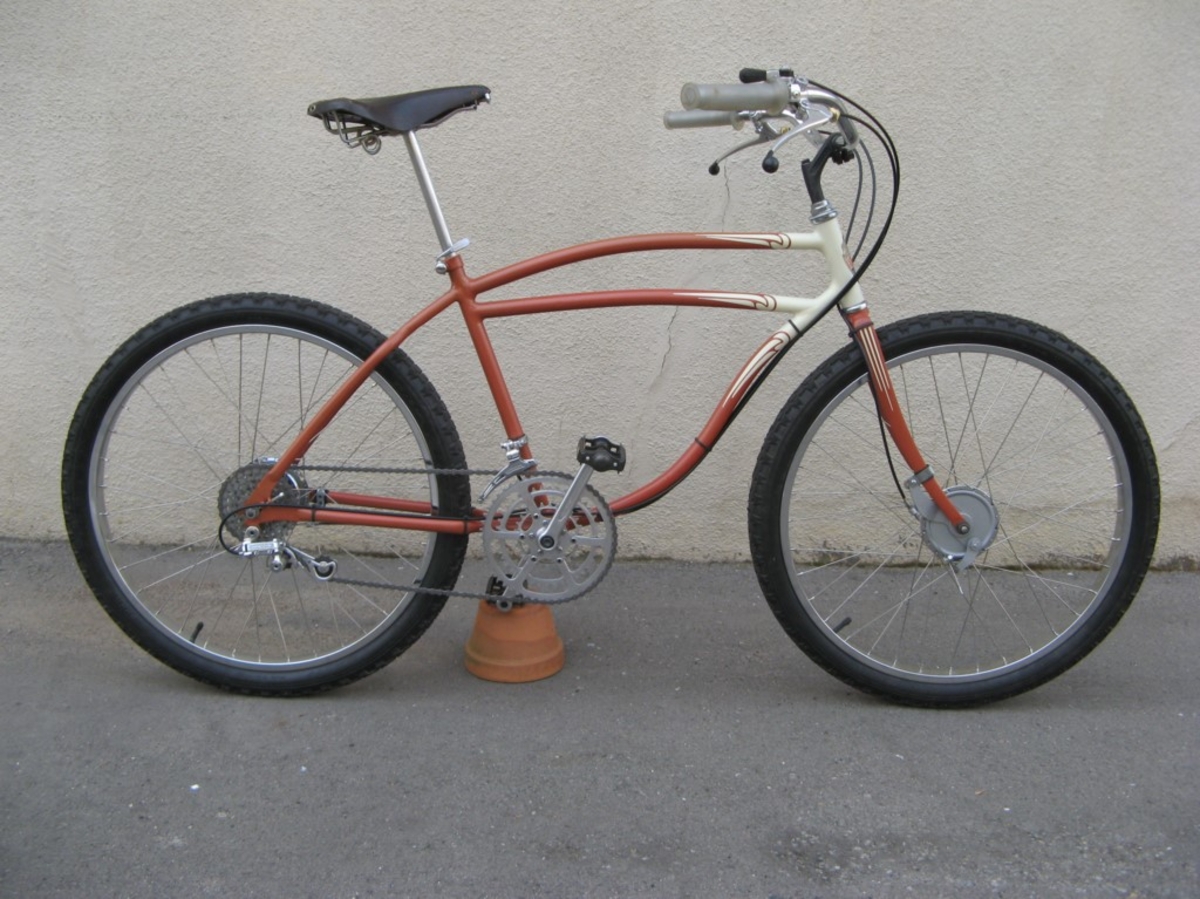
On December 5, 1976, this “clunker” (since restored by Alan Bonds,) set the all-time Repack DH course record for a rigid bike at 4:22. Since then, less than ten people people have bested Gary's time, using fully-suspended modern MTBs. Gary modified a 1942 Schwinn Excelsior X single speed cruiser by adding derailleurs and drum brakes, which made the clunker weigh just over fifty pounds. Mountain bikes, which were invented to beat Fisher's time, never eclipsed his record in any of the twenty four official Repack races. But at least true mountain bikes didn't have to “repack” their coaster brake bearings after each ride. And could be ridden uphill.
Gary's clunker is perhaps the first true mountain bike.
Photo by Alan Bonds clunkers.net
Cyclocross, 1902->today
Racing road bikes in hilly & muddy terrain predates derailleurs and knobby tires by decades. For example, the French Cyclocross Championships have been held annually over 118 times since 1902. Despite the obvious parallels, not much technology transfer between the two occurred. Mountain biking was rooted in 26“ rims and borrowing early touring/tandem components, where cyclocross remained stuck with light weight road components, as much of each cyclocross event requires extensive running with the bike over one's shoulder. And yet early mountain bikes often sported portage straps…
Photo from Le Miroir Des Sports, Mar 1923, of Le Championnat de France Cross Cyclo-pédestre, 04 Mar 1923. Racers running down hill, using tubular slick tires with caliper brakes. blackbirdsf
VCCP, 1951 -> 1956
The Vélo Cross Club Parisien (VCCP) raced modified 650B road bikes around dirt tracks, motocross style - up and down hill. They modified the frames with higher bottom brackets, front suspension forks and employed thumb shifters - none of which would be available on the market for decades. The teenagers who started the club would race at motocross events around the suburbs of Paris. Lack of support from the motocross venues and professional cycling doomed the early flourishing of French Vélo Tout-Terrain.
Resources:
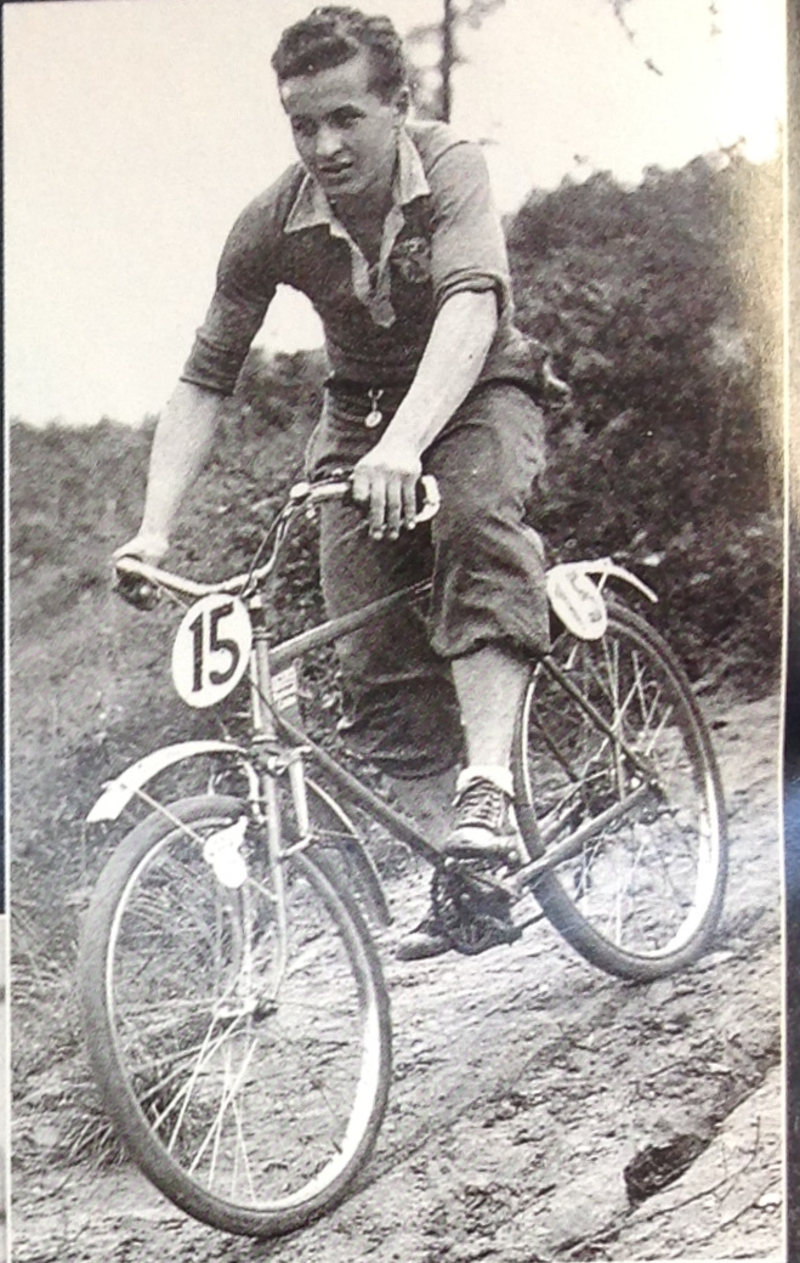
VCCP member, circa 1955.
Front suspension fork, high bottom bracket, front caliper and usually rear drum brakes, and thumb shifters. See: mtbr. Also: tontonvelo
Rough Stuff Fellowship, 1955 -> today
The oldest off-road cycling club, the Rough Stuff fellows took their skinny tyred bikes everywhere where bikes were not meant to go. Cycling with fenders, internal gearing, while wearing wool, sturdy boots and pride in their eccentricity. Marin mountain biking grew out of racing down hill and yet MTBs also satisfied the more important off-road cycling urge: exploration and adventure. The British have remained attached to their more attractive internal hubs for many years after MTBs took hold in the UK.
The Rough Stuff instagram photo album shows that there was no unpaved place on earth they did not explore on two wheels.
Resources:
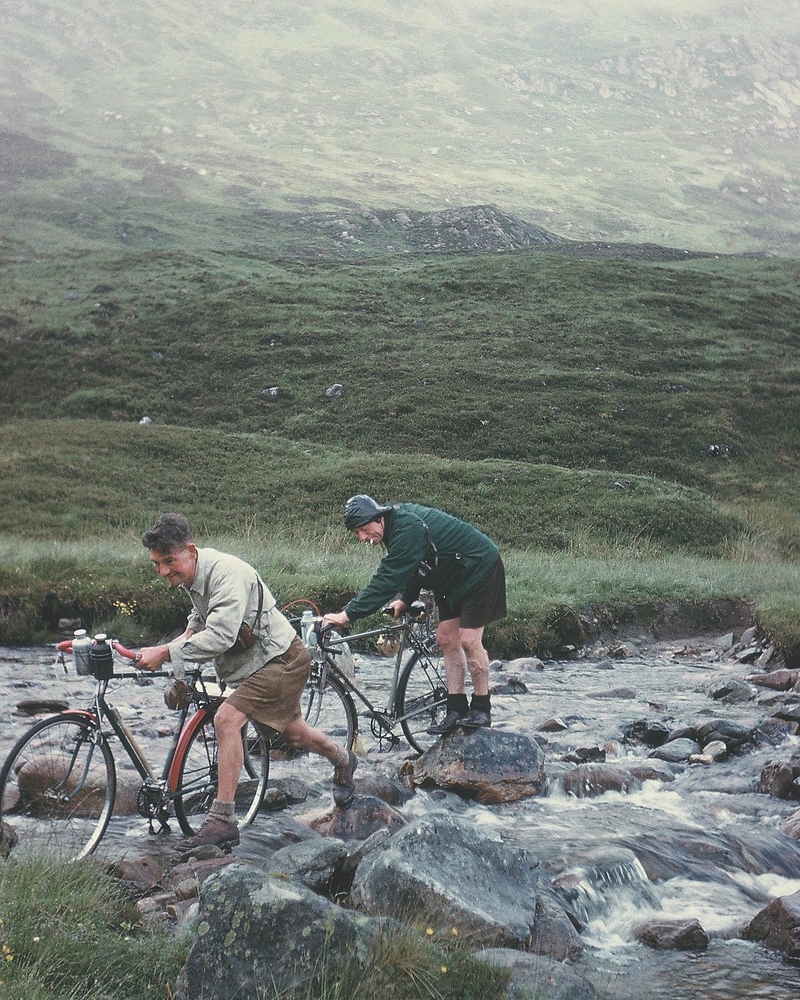
instagram
Crossing a stream on Corrie Coillie, Scotland, 1959. See:
Resilion cantilever brakes.
Larkspur Canyon Gang, 1968 -> 1972
Five miles from Fairfax, Larkspur, California saw the first single-speed clunkers climb the slopes of Mt Tam. Although short lived, many members later joined in when geared clunkers emerged on Repack.
Resources:
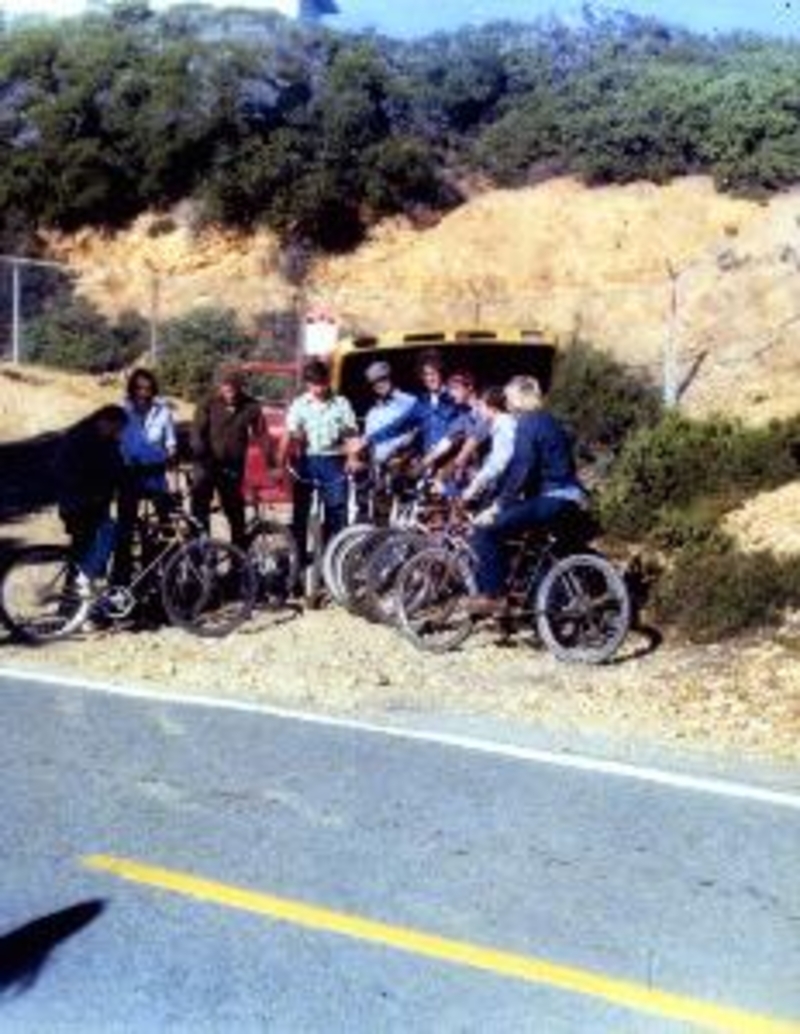
Larkspur Canyon Gang, ca 1971 cblunkers
Morrow Dirt Club, 1972 -> 1980+
On December 1, 1974, members of the Morrow Dirt club drove up from Cupertino to Mill Valley, CA to attend the West Coast Cyclocross Championships. Also in attendance were Breeze, Fisher and other members of the future Repack crew. This was the first time clunkers with derailleurs and thumb shifters were viewed in public on the west coast. A few Mt. Tam clunkers already used internal hubs, which tended to “explode into dust.”1) Derailleurs with thumb shifters were key, and the Morrow Dirt Club showed the way.
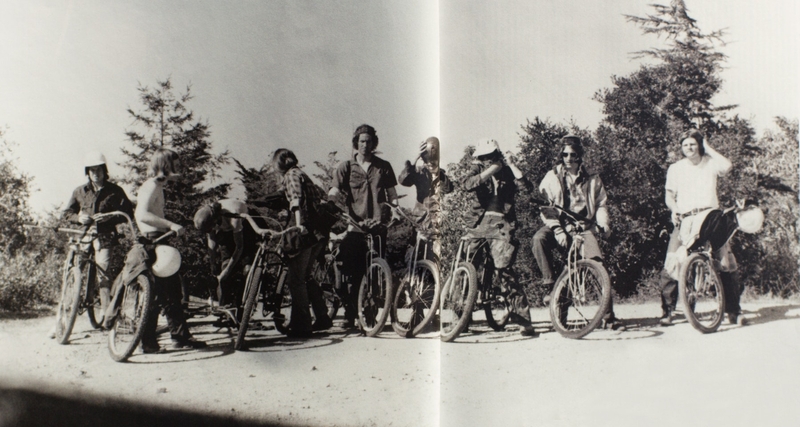
Morrow Dirt Club, Saratoga, CA, ca. 1974
dirtmountainbike
Resources:
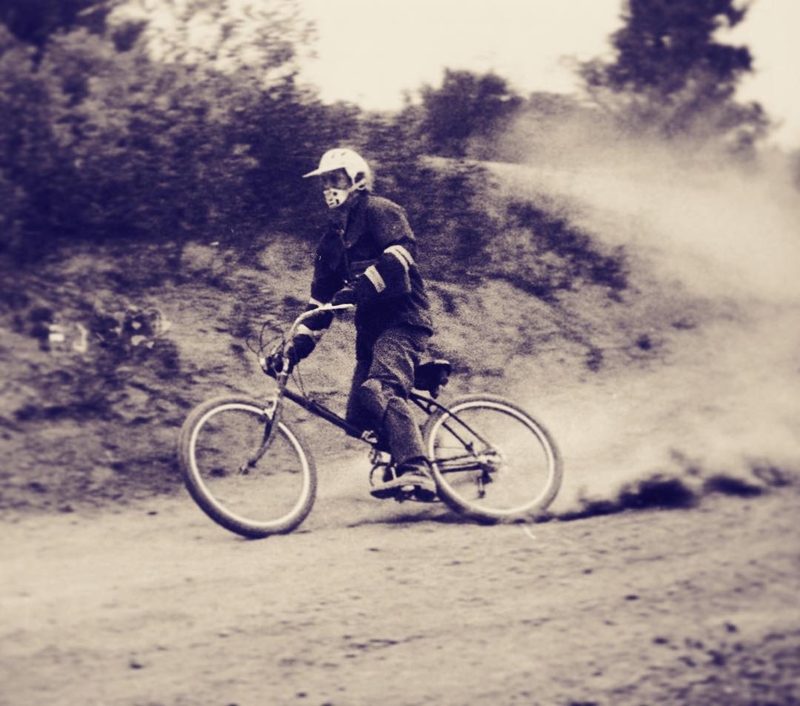
Russ Mahon, Cupertino, 1973
instagram
Clunkers
Clunkers2) were the link from road bikes to mountain bikes. The Repack race started in 1976 with clunkers: converted cruisers with added gearing, coaster brakes and 26” knobby tires. The need to go faster and survive the 1300' Repack drop in less than five minutes created better frames, forks, brakes and gearing which became the MTB. To be sure, the 70's clunkers were downhill worthy: seven of the top ten Repack times were on clunkers3)
Resources:
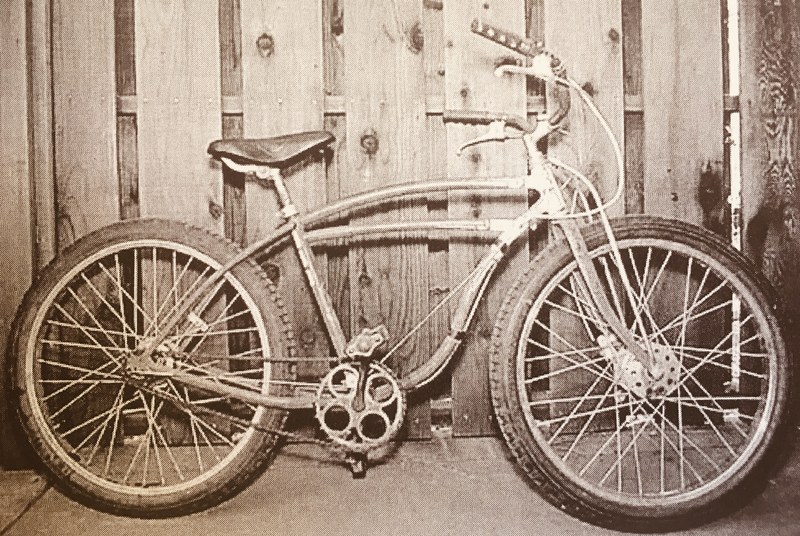
Tim DuPertuis, 1974 clunker, Sturmey Archer 3 speed hub with drum brakes. Tim built Marin's first geared clunkers starting in 1972.4)

“Five proud Schwinn Excelsior owners after a Repack event, Alan Bonds, Benny Heinricks, Ross Parkerson, Jim Stern, and Charlie Kelly”, 1977. Photo by Wende Cragg. sonic.net
Most clunkers by this point had drum brakes and derailleurs both front and rear. Schwinn forks were weak and Alan Bond's clunkers all had extra fork braces.
Crested Butte, 1976->today
The original home to the Mountain Bike Hall of Fame, Crested Butte put its name on the mountain biking calendar starting in 1976, when a local group started a single speed bike ride over the Pearl Pass to Aspen, fueled by alcohol and propelled by gravity. The media attention got noticed by Charlie Kelly and friends who made a road trip in 1978 to cross pollinate the clunker culture. With more media attention it became the oldest annual mountain bike event in the world.
And they spent the night before in the bar. And they were so, so beat up the next morning. I'm surprised any of them even made it up to the base camp. It was mostly just a drunken party that kinda had bikes involved but wasn't really focused on them. And they were tough. I mean Oh My God. We'd start riding and they throw up and they'd get back on their bike and they'd keep riding. Wende Cragg, Gary Fisher & Charlie Kelly reminiscing in Klunkerz.
Resources:
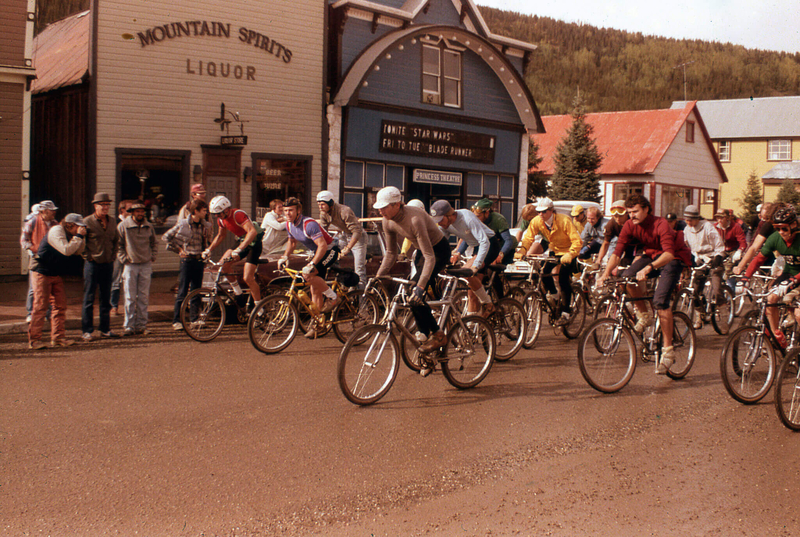
The Pearl Pass Tour gets serious, 1980. Note Tom Ritchey in red, front & center.
Photo by Kevin Montgomery localfreshies
John Finley Scott
John Finley Scott, a Professor of Sociology at UC Davis, owner of the Cupertino Bike Shop, first investor in Kelly/Fisher MountainBikes and also to Tom Ritchey, coiner of the term “Bullmoose Handlebars” and early designer of off road bicycles was hugely influential in guiding mountain biking's story.
Finley was a visionary, but in an empty forest. His 1953 “Woodsie” bike was too far ahead of its time and did not affect the bike industry. When others entered the woods in droves 20 years later, he was delighted and offered his support. His backing of Fisher and Kelly gave their “MountainBikes” business more momentum, perhaps the critical momentum to carry through to inspire others. Joe Breeze, bicycleretailer
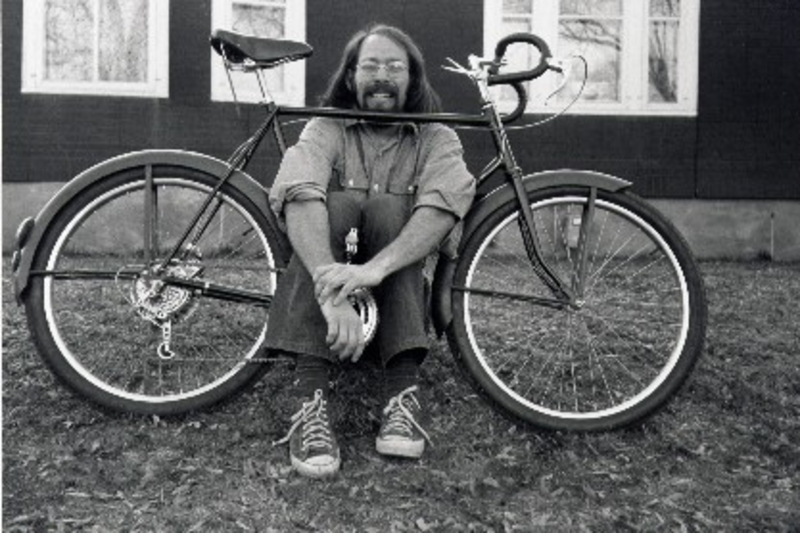
Tankagnolo, 1975
mtbprehistory
Tankagnolo
Bob Crispin built up a few geared cruisers with disc brakes in Spokane Washington for trail riding, starting in 1974. See Bob's blog at: mtbprehistory and also: mmbhof
Tankagnlolo, by Bob Cripsin, 1975. 1930's Schwinn Varsity donor frame, Shimano disc brakes, Shimano Crane derailleurs, cruiser balloon tire wheels.

Andy Gilmour, 1976
Extensively rebuilt.
facebook
Gilmour Cycles
Andy Gilmour has hand built over 5,000 racing bicycle frames and complete bikes since 1974 out of his shop in Tuscon, Arizona. He built a very few ATBs starting in 1975/6, which he called “cycle trucks.” The example here has been rebuilt with “newer” components and removed a brazed on rack - but retains its bi-plane fork, 73/73 geometry, BMX style braking, handlebars and horizontal, rear drop-outs. 5)
See:

